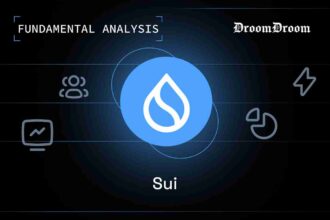For individuals pursuing financial stability and growth, investment portfolios are an important aspect. Earlier on, portfolios consisted of real estate, bonds and stocks.
- Understanding Portfolio Diversification
- The Importance of Art in Portfolio Diversification
- Low Connection with Traditional Assets
- Tangible Asset with Potential for Appreciation
- Multiple Investment Opportunities
- Opportunities for Value Creation
- Artfi: Empowering Diversification of Portfolio Through Art
- Increased Accessibility and Fractional Ownership Opportunities
- Diversification Across Asset Classes
- Transparency and Security
- Education and Community Engagement
- Role of Art in Diversifying Investment Portfolios is Crucial
However, in the most recent times, alternative investments like art have gained momentum for their role in diversifying portfolios and minimizing risks.
The role of art in diversifying investment portfolios refers to the inclusion of artworks as a component of an investment strategy that aims to spread out risk and enhance potential returns.
Understanding Portfolio Diversification
Diversifying portfolios is an approach that includes spreading risks through investing in a variety of assets. The rule behind diversification of portfolios is simple: Investors are able to minimize the impacts caused by poor performance of any single asset in their overall portfolio by holding a combination of different investments.
Diversification is crucial for risk management and achievement of long term financial goals.
Read more about 6 Helpful Strategies To Diversify a Crypto Portfolio via Altcoins
The Importance of Art in Portfolio Diversification
Low Connection with Traditional Assets
The likelihood of art connecting with traditional financial assets such as bonds and stocks is little. This shows that the prices of art pieces often do not follow the same patterns with the stocks and bonds.
Thus, art can act as the protective strategy against market instability. The value of arts might remain constant or even increase in times of economic downturns when the prices of stocks may decrease. This feature makes art an enticing option for investors looking for potential growth and stability during unfavorable market conditions.
Tangible Asset with Potential for Appreciation
Art is a tangible asset that can be possessed and cherished by investors physically unlike stocks or bonds which are intangible.
Additionally, art has a potential to appreciate remarkably over time making it an enticing investment option for the preservation and growth of wealth.
Multiple Investment Opportunities
The art market covers a broad range of artworks, including sculptures, paintings and digital art.
Investors are entitled to choose artworks that correspond to their investment goals, individual preferences and risk tolerance through this diversity.
Moreover, investors can diversify across various genres of art, periods and artists to spread the risk further within their portfolios.
Opportunities for Value Creation
The art market, as it is dynamic, is influenced by different factors including collector demands, trends in arts and cultural significance. Intelligent investors can spot undervalued artworks with the potential to appreciate in future.
Moreover, active participation in the art market, like attending art fairs and auctions, can give valuable insights and opportunities for the creation of value.
Artfi: Empowering Diversification of Portfolio Through Art
Artfi is a revolutionary platform that allows investors to widen their portfolios through art. Artfi gives unmatched access to blue-chip artworks in form of digital collectibles by leveraging the blockchain technology and non-fungible tokens (NFTs) allowing investors to participate in the art market easily and with transparency.
At Artfi, we believe in democratizing the art investment landscape, empowering individuals to participate in the art market like never before.
Asif Kamal, Founder & CEO of Artfi
Increased Accessibility and Fractional Ownership Opportunities
Artfi offers an exceptional advantage regarding accessibility. Investors utilize the platform to gain access to a well laid mixture of high quality artworks sourced from respected artists and galleries across the world.
In addition, Artfi enhances fractional ownership, helping investors to access a partial ownership stakes in these arts.
This strategy makes investing in art more possible for a wider number of people, since it minimizes the barrier to entry related to buying whole pieces outright.
Investors can diversify their portfolios with top-tier artworks while reducing the financial burden associated with possessing art assets through fractional ownership.
Read more on Safeguarding Wealth in Real-World Asset Tokenization: Navigating Beyond the Hype
Diversification Across Asset Classes
Artfi allows investors to diversify across various classes of assets, including traditional financial assets and investment alternatives. By adding art in their portfolios, investors can minimize the risk and facilitate long term returns on investments.
In addition, investment on arts provide the potential for unrelated returns further enhancing the benefits of portfolio diversification.
Transparency and Security
Transparency and security is a priority for Artfi. Investors are provided with an all-inclusive information about every artwork, including provenance, ownership history and authenticity.
Moreover, Artfi leverages the blockchain technology to ensure established records of ownership and safe transactions safeguarding the interests of investors and enhancing trust in the art market.
Read more about Artfi Genesis Offering Pass Analysis: Unlocking Art’s Elite Circle
Education and Community Engagement
Artfi is committed to equipping investors with education about the art market and encouraging a lively community of art collectors and enthusiasts.
Artfi empowers investors to make informed decisions and navigate the art market complexities effectively by offering educational resources, webinars, and networking events.
Role of Art in Diversifying Investment Portfolios is Crucial
Art serves as the last blueprint for differentiating assets within the portfolio and proffers the most efficient way which balances with other traditional financial instruments. Art buying is risky and it can also be a way to reduce risks, preserve wealth and have future financial returns that are higher than the market.
On top of that, Artfi allows for a diversified portfolio, provides an opportunity for acquiring high-quality artwork, permits for fractionalization of art works, and ensures the highest degree of quality and security of transactions.



















